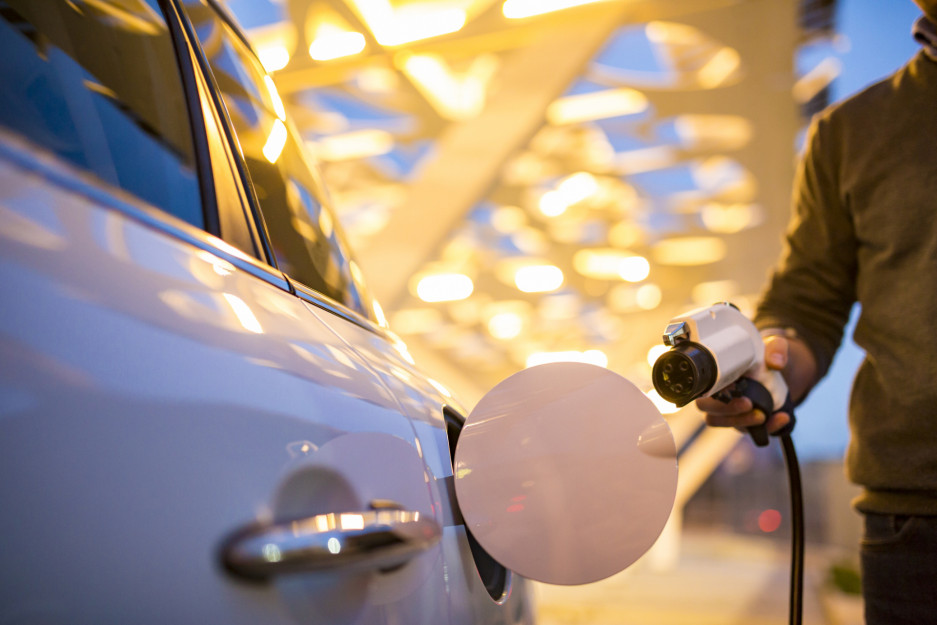
Positive Mobility
eMagThe automotive industry gradually changes gear

The popularity of electric vehicles continues to race ahead. In 2019, the European Union saw a 93% year-on-year rise in electric vehicle registrations. Is the green transition truly underway?
Among EU countries, Germany, the Netherlands and France accounted for 188,000 of 285,000 all-electric new vehicles registered in 2019. France broke through the 200,000 barrier, equivalent to 1.9% of its total fleet. But China continues to lead the way, accounting for almost 50% of global sales in 2018, with the 984,000 vehicles registered representing 5% of its total fleet. The French government and automotive industry have a target of 600,000 electric cars on the road by 2022.
The need for incentive policies
Price is the primary barrier to electric vehicle purchases and the first factor cited by 47% of French people. National governments use incentive policies to encourage purchases. In France, state subsidies and bonuses can amount to €11,000. In Norway, electric cars are almost fully tax-exempt, with a clear impact on sales: 46% of new vehicles registered in 2018 were all-electric. The Chinese government uses a twofold policy approach, combining subsidies for electric vehicle purchases with increasingly severe restrictions on internal combustion engines.
High upfront costs, but a long-term pay-off
Although electric vehicles remain expensive, the investment pays off in the long term. Very little maintenance is needed and a “refill” costs ten euros, less if recharging at home during off-peak hours.
The race for kWh
Developing more efficient batteries is critical to promoting a widespread uptake of electric vehicles. To achieve this, manufacturers are focusing a large portion of their R&D spending on battery technologies. The solution may lie in high density batteries, a technology currently being investigated by US company Tesla. Because, when it comes to electric vehicles, more energy equates to a longer range.
If the available range is sufficient for day-to-day journeys, limitations soon become apparent when you want to make a longer trip, obliging drivers to research the charging point locations available along their route.
Take a time-out for charging
In 2018, according to the European Automobile Manufacturers' Association (ACEA), there were 145,000 charging points in Europe. With its 27,745 public charging points — one for every 7.2 all-electric cars — France is among the better-equipped countries. Charging points are frequently sited on motorway service stations, major roads and car parks. But coverage is patchy and there are still areas without charging points. Providing charging points at strategic locations across the road network is critical.
The infrastructure challenge
As a group, operators of mobility infrastructures have an important role to play in structuring services around roads, publically accessible venues and motorways. This is one of the aims of AVERE, France’s national association for the development of electric mobility, whose members are drawn from the public and private sectors. The first obvious challenge is to equip motorway service areas with enough charging points to ensure that the ever-growing electric vehicle fleet is guaranteed sufficient range.
In Greece, for example, in 2018 VINCI Concessions opened the country’s first green service areas fitted with charging points. By 2030, it is estimated that over 2.8 million charging points will be required in Europe.
Looking slightly further ahead, research is also underway into other electric road technologies, such as reserved lanes with overhead power lines, or wireless charging systems, like those used by some smartphones, embedded in the road surface.
Alternatives to electricity?
Biofuels, LPG, hydrogen, and so on. In 2019, the European Union saw 256,000 registrations of new vehicles not fitted with a petrol engine, excluding electric and hybrid vehicles. But alternative fuels struggle to make an impact. Biofuels vary according to whether they are made from vegetable oils or alcohol. This makes it hard to provide enough fuel at the pump for everybody. And things are tougher still for hydrogen-powered vehicles. There are only about 10 hydrogen-equipped garages in France and around 100 in Germany. And whereas electric charging points costs €50,000, a hydrogen filling point can cost from €500,000 to €1 million.
Electricity, ally of tomorrow’s mobilities
Is the rise of electric vehicles a harbinger of new types of vehicle? Electric technologies are a great fit with driverless vehicles technologies. And if governments remain reticent, initial testing is promising and the movement shows no sign of running out of energy. And another plus point for electricity is that, when it comes to green mobility, it is already well ahead of the pack.